Henning Bartsch
Large Language Models Often Know When They Are Being Evaluated
May 28, 2025Abstract:If AI models can detect when they are being evaluated, the effectiveness of evaluations might be compromised. For example, models could have systematically different behavior during evaluations, leading to less reliable benchmarks for deployment and governance decisions. We investigate whether frontier language models can accurately classify transcripts based on whether they originate from evaluations or real-world deployment, a capability we call evaluation awareness. To achieve this, we construct a diverse benchmark of 1,000 prompts and transcripts from 61 distinct datasets. These span public benchmarks (e.g., MMLU, SWEBench), real-world deployment interactions, and agent trajectories from scaffolding frameworks (e.g., web-browsing agents). Frontier models clearly demonstrate above-random evaluation awareness (Gemini-2.5-Pro reaches an AUC of $0.83$), but do not yet surpass our simple human baseline (AUC of $0.92$). Furthermore, both AI models and humans are better at identifying evaluations in agentic settings compared to chat settings. Additionally, we test whether models can identify the purpose of the evaluation. Under multiple-choice and open-ended questioning, AI models far outperform random chance in identifying what an evaluation is testing for. Our results indicate that frontier models already exhibit a substantial, though not yet superhuman, level of evaluation-awareness. We recommend tracking this capability in future models.
Technical Report: Evaluating Goal Drift in Language Model Agents
May 05, 2025Abstract:As language models (LMs) are increasingly deployed as autonomous agents, their robust adherence to human-assigned objectives becomes crucial for safe operation. When these agents operate independently for extended periods without human oversight, even initially well-specified goals may gradually shift. Detecting and measuring goal drift - an agent's tendency to deviate from its original objective over time - presents significant challenges, as goals can shift gradually, causing only subtle behavioral changes. This paper proposes a novel approach to analyzing goal drift in LM agents. In our experiments, agents are first explicitly given a goal through their system prompt, then exposed to competing objectives through environmental pressures. We demonstrate that while the best-performing agent (a scaffolded version of Claude 3.5 Sonnet) maintains nearly perfect goal adherence for more than 100,000 tokens in our most difficult evaluation setting, all evaluated models exhibit some degree of goal drift. We also find that goal drift correlates with models' increasing susceptibility to pattern-matching behaviors as the context length grows.
The Elicitation Game: Evaluating Capability Elicitation Techniques
Feb 04, 2025



Abstract:Capability evaluations are required to understand and regulate AI systems that may be deployed or further developed. Therefore, it is important that evaluations provide an accurate estimation of an AI system's capabilities. However, in numerous cases, previously latent capabilities have been elicited from models, sometimes long after initial release. Accordingly, substantial efforts have been made to develop methods for eliciting latent capabilities from models. In this paper, we evaluate the effectiveness of capability elicitation techniques by intentionally training model organisms -- language models with hidden capabilities that are revealed by a password. We introduce a novel method for training model organisms, based on circuit breaking, which is more robust to elicitation techniques than standard password-locked models. We focus on elicitation techniques based on prompting and activation steering, and compare these to fine-tuning methods. Prompting techniques can elicit the actual capability of both password-locked and circuit-broken model organisms in an MCQA setting, while steering fails to do so. For a code-generation task, only fine-tuning can elicit the hidden capabilities of our novel model organism. Additionally, our results suggest that combining techniques improves elicitation. Still, if possible, fine-tuning should be the method of choice to improve the trustworthiness of capability evaluations.
Self-Consistency of Large Language Models under Ambiguity
Oct 20, 2023

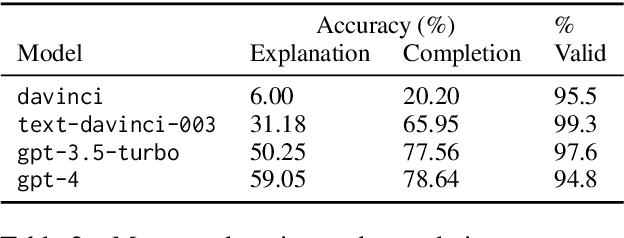

Abstract:Large language models (LLMs) that do not give consistent answers across contexts are problematic when used for tasks with expectations of consistency, e.g., question-answering, explanations, etc. Our work presents an evaluation benchmark for self-consistency in cases of under-specification where two or more answers can be correct. We conduct a series of behavioral experiments on the OpenAI model suite using an ambiguous integer sequence completion task. We find that average consistency ranges from 67\% to 82\%, far higher than would be predicted if a model's consistency was random, and increases as model capability improves. Furthermore, we show that models tend to maintain self-consistency across a series of robustness checks, including prompting speaker changes and sequence length changes. These results suggest that self-consistency arises as an emergent capability without specifically training for it. Despite this, we find that models are uncalibrated when judging their own consistency, with models displaying both over- and under-confidence. We also propose a nonparametric test for determining from token output distribution whether a model assigns non-trivial probability to alternative answers. Using this test, we find that despite increases in self-consistency, models usually place significant weight on alternative, inconsistent answers. This distribution of probability mass provides evidence that even highly self-consistent models internally compute multiple possible responses.
Learning to Request Guidance in Emergent Communication
Dec 11, 2019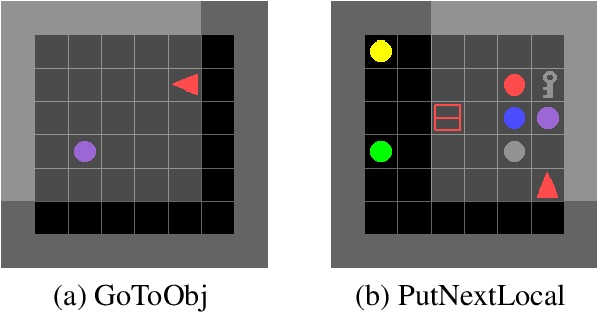
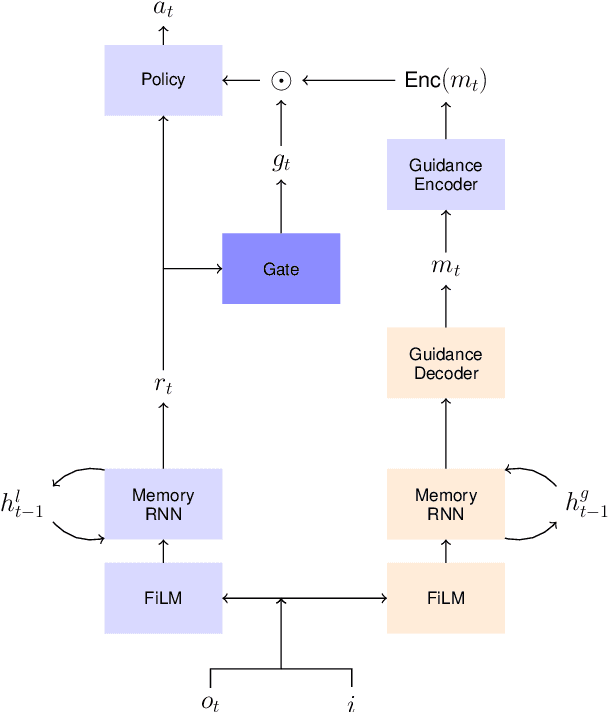
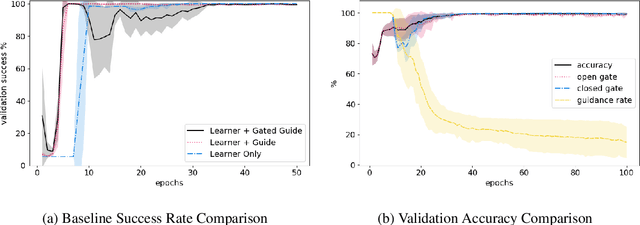
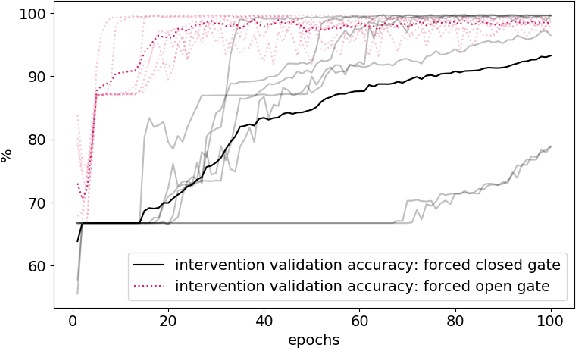
Abstract:Previous research into agent communication has shown that a pre-trained guide can speed up the learning process of an imitation learning agent. The guide achieves this by providing the agent with discrete messages in an emerged language about how to solve the task. We extend this one-directional communication by a one-bit communication channel from the learner back to the guide: It is able to ask the guide for help, and we limit the guidance by penalizing the learner for these requests. During training, the agent learns to control this gate based on its current observation. We find that the amount of requested guidance decreases over time and guidance is requested in situations of high uncertainty. We investigate the agent's performance in cases of open and closed gates and discuss potential motives for the observed gating behavior.
 Add to Chrome
Add to Chrome Add to Firefox
Add to Firefox Add to Edge
Add to Edge